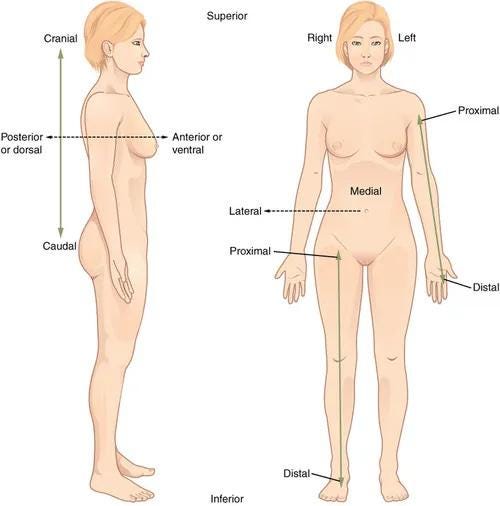CQRG's Winter Medical Terminology Boot Camp
DAY 3 / ORGAN SYSTEMS, REGIONS, & DIRECTIONAL TERMS
Welcome!
If you are new to the site we invite you to browse our materials and program activities. Simply click on the tabs above to view the activities and reference materials. All of the medical terminology program lessons will be posted on a daily basis in the NOTES section. This short program will conclude Wednesday, January 1, 2025. Subscribe to receive program updates and monthly study guides emailed directly to you for free.
Organ Systems, Regions, & Directional Terms
Learning Objectives:
This lesson is designed to introduce learners to anatomy, physiology, and directional terms.
Definitions
Anatomy
The branch of biology that involves the study of the structure of organisms and their parts
Physiology
The branch of biology that involves the study of the functions and activities of life or of living things
*(Scroll through at the end of the lesson to find a brief Anatomy & Physiology video).
Starting with our next class, each program lesson will begin by introducing you to a specific organ system and move on to review the medical terminology relevant to it.
An organ is an anatomical structure of the body composed of two or more kinds of tissues. Every organ performs one or more physiological functions.
Organ systems are groups of organs working together to perform major functions and work in coordination to meet the needs of the human body.
Organ Systems
The human body is comprised of eleven organ systems.
These systems include the: Cardiovascular System, Digestive System, Endocrine System, Integumentary System, Lymphatic System, Skeletal System, Muscular System, Nervous System, Respiratory System, Reproductive and Urinary Systems.
Anatomical Position & Regional Terms
The human body is divided into regions.
The main regions include the head, neck, thorax, abdomen, pelvis, and upper and lower extremities.
Every region area can be identified by even more specific terms that help increase precision and can therefore help reduce errors when used and understood properly.
Any area or section of the body described in a certain posture is called an anatomical position. When in the basic anatomical position, the feet are flat and pointed front, the body is straight and facing the viewer. With the palms pointing forward, the upper limbs are at the sides of the torso.
Image: med.libretexts.org
Directional Terms
Directional terms are used by healthcare professionals to communicate the position of an anatomical structure by comparing its position to other structures within the body or within the orientation of the body itself.
Examples include:
Anterior: front or directed toward the front of the body; also: ventral
Posterior: back or directed toward the back of the body; also: dorsal
Superior: position higher than another part of the body proper; also: cranial
Inferior: position lower than another part of the body proper; also: caudal
Lateral: at the side or directed toward the side of the body
Medial: directed toward the middle of the body
Proximal: position nearer to the point of attachment or to the trunk of the body
Distal: position farther from the point of attachment or trunk of the body
Superficial: position that is closer to the surface of the body
Deep: position that is farther from the surface of the body
It is important for health professionals to have a strong grasp of these terms to help prevent confusion and guard against errors when discussing the locations of specific bodily parts. Be sure to review the definitions and work toward committing them to memory.
Recommended Reading (Optional):
Textbook
Medical Terminology for Healthcare Professions, Katherine Greene and Andrea Nelson
Read Chapter 3
Review Body Terminology
https://pressbooks.uwf.edu/medicalterminology/chapter/body-terminology/
*This text is available for free online.
You may download a PDF copy or browse it at the website.
All images unless otherwise noted are linked from the Unsplash image catalog.








